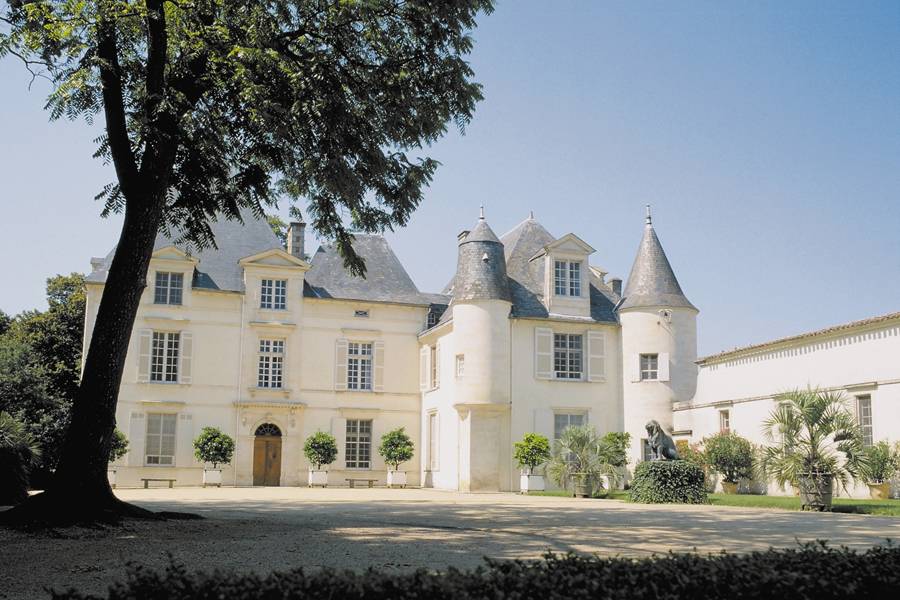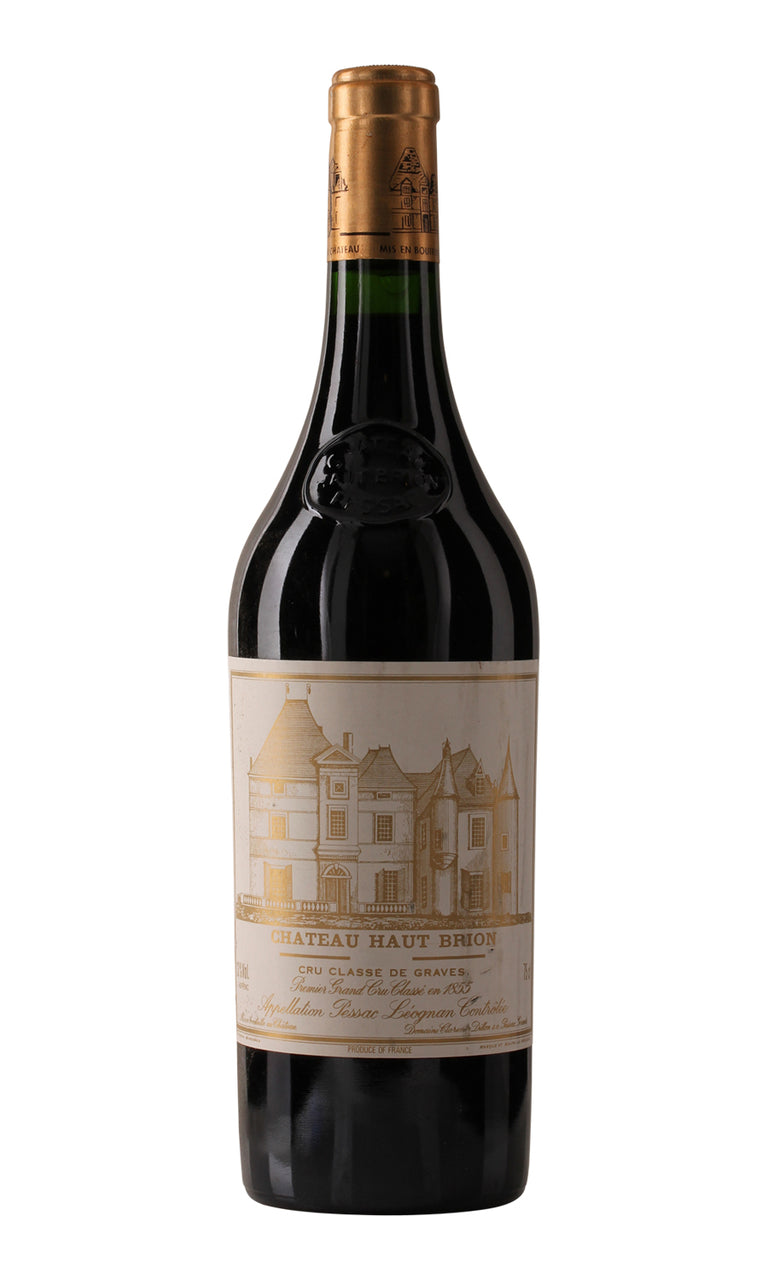- Colour Red
- Producer Château Haut-Brion
- Region Pessac-Léognan
- Drinking 2015 - 2040
- Case size 12x75cl
- Available Now
1995 - Ch Haut Brion 1er Cru Pessac-Léognan - 12x75cl
- Colour Red
- Producer Château Haut-Brion
- Region Pessac-Léognan
- Drinking 2015 - 2040
- Case size 12x75cl
- Available Now
Select pricing type
Need help? Call +44 (0)20 7793 7900 or email wine@goedhuiswaddesdon.com.
-
Neal Martin, November 21, Score: 95
This 1995 Haut-Brion was served blind during the summer at a private dinner in Bordeaux, a bottle with perfect provenance. It is a vintage that I have drunk several times, but not since 2013. Deep in colour, the 1995 has plenty of black fruit on the nose, displaying a distinctive briny influence, classic in style with stunning definition. There is something regal about the aromatics. The palate is well-balanced, with fine acidity and black fruit once again, sappy and saline, with an underlying ash-like note emerging as it opens in the glass. Though quite linear towards the tobacco and sous-bois finish, the 1995 conspicuously gains weight and breeding with time. Therefore, I would afford this First Growth four to five hours of decanting as it remains more backward than I imagined.
-
Robert Parker, April 1996, Score: 94-96
In complete contrast to the 1994, the 1995 Haut-Brion appears to be a more forceful, larger-scaled, more muscular wine, without the flattering, precocious charm of the 1994. It is a powerful wine, with a saturated purple color, medium to full body, exceptional richness and purity, and a formidable, surprisingly tannic and muscular finish. Although more backward than usual, it appears to be the finest Haut-Brion since the fabulously rich, opulent 1989. If readers want a good image of what the 1995 Haut-Brion tastes like, I propose the following hypothetical blend ... 60% 1985 Haut-Brion, 30% 1986 Haut-Brion, and 10% 1989 Haut-Brion. Fans of this estate will want to be sure and get a few bottles of this 1995, which will require 5-8 years of cellaring. It will age well for at least three decades. It is unquestionably one of the great successes of the vintage.All of the wines in this segment were tasted between March 19 and March 28 in Bordeaux. Most of the important wines from both the 1994 and 1995 vintages were tasted three separate times during my ten-day stay in Bordeaux. Drink: 2001-2026.
-
Robert Parker, February 1997, Score: 94-96
One of my favorite and most educational visits in Bordeaux is the time I spend with Haut-Brion's highly respected administrator, Jean Delmas. Delmas is the thinking man's winemaker, with a level of experience and success that is unequaled in Bordeaux. On this visit, we discussed at length the strong tendency in Bordeaux to produce wines with higher and higher percentages of Merlot. As Jean Delmas says, (1), Merlot provides grapes that can be picked earlier, and tend to ripen with higher degrees of sugar, thus producing wines with higher alcohol. (2) Merlot has less acidity, which, combined with its tendency to produce high alcohol, results in a sweeter, supple, and initially more seductive wine. (3) Winemakers can extract more from Merlot than they can from Cabernet Sauvignon, thus they can vinify Merlot at higher temperatures, ultimately producing exotic, opulent wines that are thrilling to taste young. However, as Delmas pointed out, it is the Cabernet Sauvignon that provides the structure, backbone, and, to his palate, ultimately the greatest measure of complexity, character, and Bordeaux typicity. Jean Delmas enjoys a sumptuous Merlot-based wine as much as any Bordeaux wine lover I know, but he is concerned by the replacement of Cabernet Sauvignon vineyards with Merlot. In short, he worries that much of the intrinsic character of many Medoc and Graves chateaux could be muted or lost in a succession of exotic, flashy, glitzy wines that are garish Medoc imitations of Pomerols and St.-Emilions - something to think about. Haut-Brion's saturated purple-colored 1995 is a superb effort. Not far off the quality of the magnificent 1989 and increasingly impressive 1990, the 1995 possesses that extra dimension of sweetness, glycerin, and fat that are the hallmarks of a vintage shaped by abundant sun and ripeness. Full-bodied, yet not heavy, the 1995 Haut-Brion displays a smoky, tobacco, roasted herb, and blackcurrant/plum-scented nose. Very ripe, yet nicely buttressed by soft acid and sweet tannin, this graceful, seamlessly made Haut-Brion should drink well when young, and last for 25+ years. Bravo!
-
Robert Parker, January 1998, Score: 95
Haut-Brion's saturated purple-colored 1995 is a superb effort. Not far off the quality of the magnificent 1989 and increasingly impressive 1990, the 1995 possesses that extra dimension of sweetness, glycerin, and fat that are the hallmarks of a vintage shaped by abundant sun and ripeness. It is full-bodied, yet not heavy. The 1995 Haut-Brion displays a smoky, tobacco, roasted herb, and black currant/plum-scented nose. The wine is very ripe, yet nicely buttressed by soft acid and sweet tannin. This graceful, seamlessly made Haut-Brion should drink well when young, and last for 25+ years. Last tasted 11/97. Drink: 1997-2022.
-
Robert Parker, January 2003, Score: 96
It is fun to go back and forth between the 1995 and 1996, two superb vintages for Haut-Brion. The 1995 seems to have sweeter tannin and a bit more fat and seamlessness when compared to the more structured and muscular 1996. Certainly 1995 was a vintage that the brilliant administrator Jean Delmas handled flawlessly. The result is a deep ruby/purple-colored wine with a tight but promising nose of burning wood embers intermixed with vanilla, spice box, earth, mineral, sweet cherry, black currant, plum-like fruit, medium to full body, a high level of ripe but sweet tannin, and a finish that goes on for a good 40-45 seconds. This wine is just beginning to emerge from a very closed state where it was unyielding and backward. Anticipated maturity: 2006-2035. Last tasted, 11/02.
-
Robert Parker, February 1998, Score: 96
This wine has been brilliant on every occasion I have tasted it. More accessible and forward than the 1996, it possesses a saturated ruby/purple color, as well as a beautiful, knock-out set of aromatics, consisting of black fruits, vanillin, spice, and wood-fire smoke. Multidimensional and rich, with layers of ripe fruit, and beautifully integrated tannin and acidity, this medium to full-bodied wine is a graceful, seamless, exceptional Haut-Brion that should drink surprisingly well young. Anticipated maturity: 2000-2030.
Producer
Château Haut-Brion
Arguably the oldest recognised Bordeaux grand cru, Haut Brion has been owned by the American Dillon family since 1935. The Château was an early moderniser - the first estate to implement steel vats in 1961 - and over the years, their incredible investments have re-established the inherent quality of this property, enabling it to emerge as possibly the most consistent first growth since the 1980s. Situated in Pessac-Léognan ...Read more
Arguably the oldest recognised Bordeaux grand cru, Haut Brion has been owned by the American Dillon family since 1935. The Château was an early moderniser - the first estate to implement steel vats in 1961 - and over the years, their incredible investments have re-established the inherent quality of this property, enabling it to emerge as possibly the most consistent first growth since the 1980s. Situated in Pessac-Léognan in Graves, the estate is the only classified growth located outside the Médoc. Château Haut Brion has the most Merlot and the most Cabernet Franc of any of the First Growths and the second wine is Le Clarence de Haut-Brion, known as Ch Bahans Haut Brion prior to 2007.Read less

Region
Pessac-Léognan
Stretching from the rather unglamorous southern suburbs of Bordeaux, for 50 km along the left bank of the river Garonne, lies Graves. Named for its gravelly soil, a relic of Ice Age glaciers, this is the birthplace of claret, despatched from the Middle Ages onwards from the nearby quayside to England in vast quantities. It can feel as though Bordeaux is just about red wines, but some sensational white wines are produced in this area from a blend of sauvignon blanc, Semillon and, occasionally, muscadelle grapes, often fermented and aged in barrel. In particular, Domaine de Chevalier is renowned for its superbly complex whites, which continue to develop in bottle over decades. A premium appellation, Pessac-Leognan, was created in 1987 for the most prestigious terroirs within Graves. These are soils with exceptional drainage, made up of gravel terraces built up in layers over many millennia, and consequently thrive in mediocre vintages but are less likely to perform well in hotter years. These wines were appraised and graded in their own classification system in 1953 and updated in 1959, but, like the 1855 classification system, this should be regarded with caution and the wines must absolutely be assessed on their own current merits.




